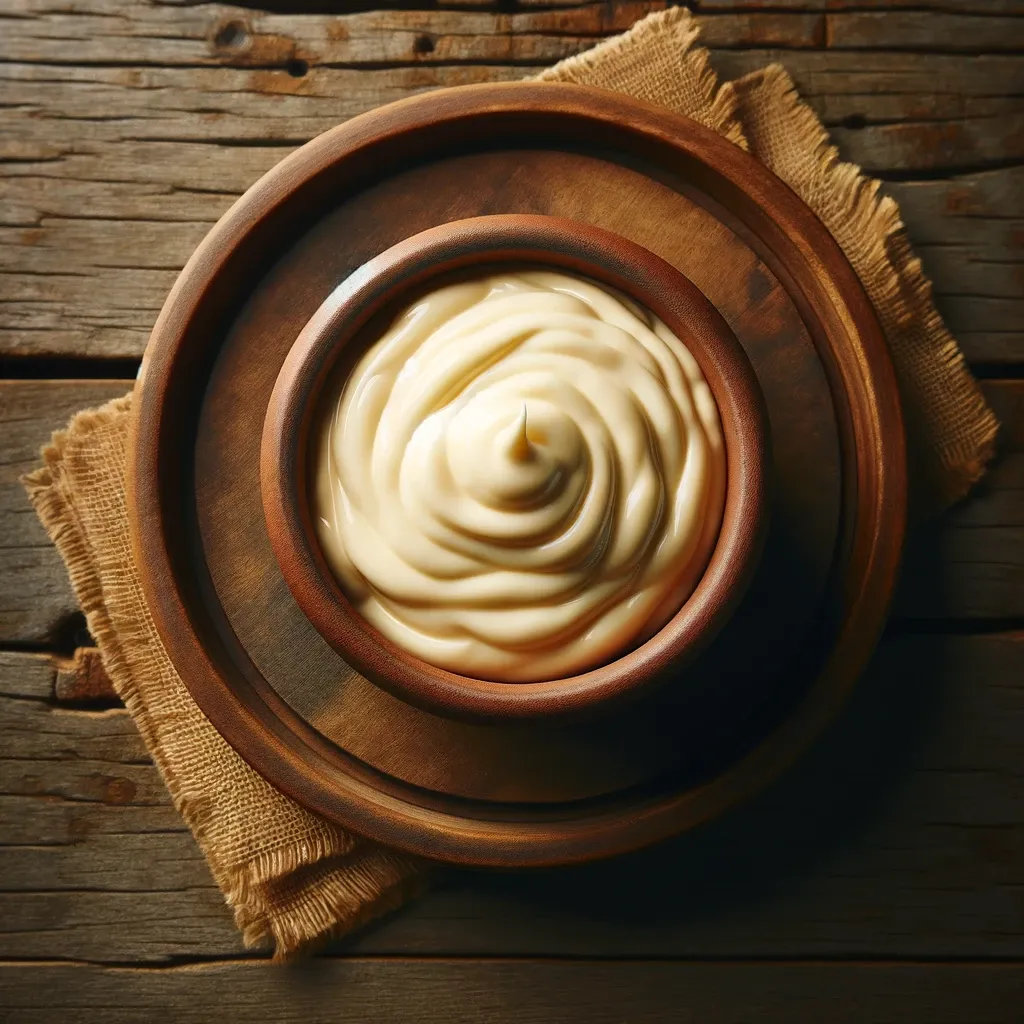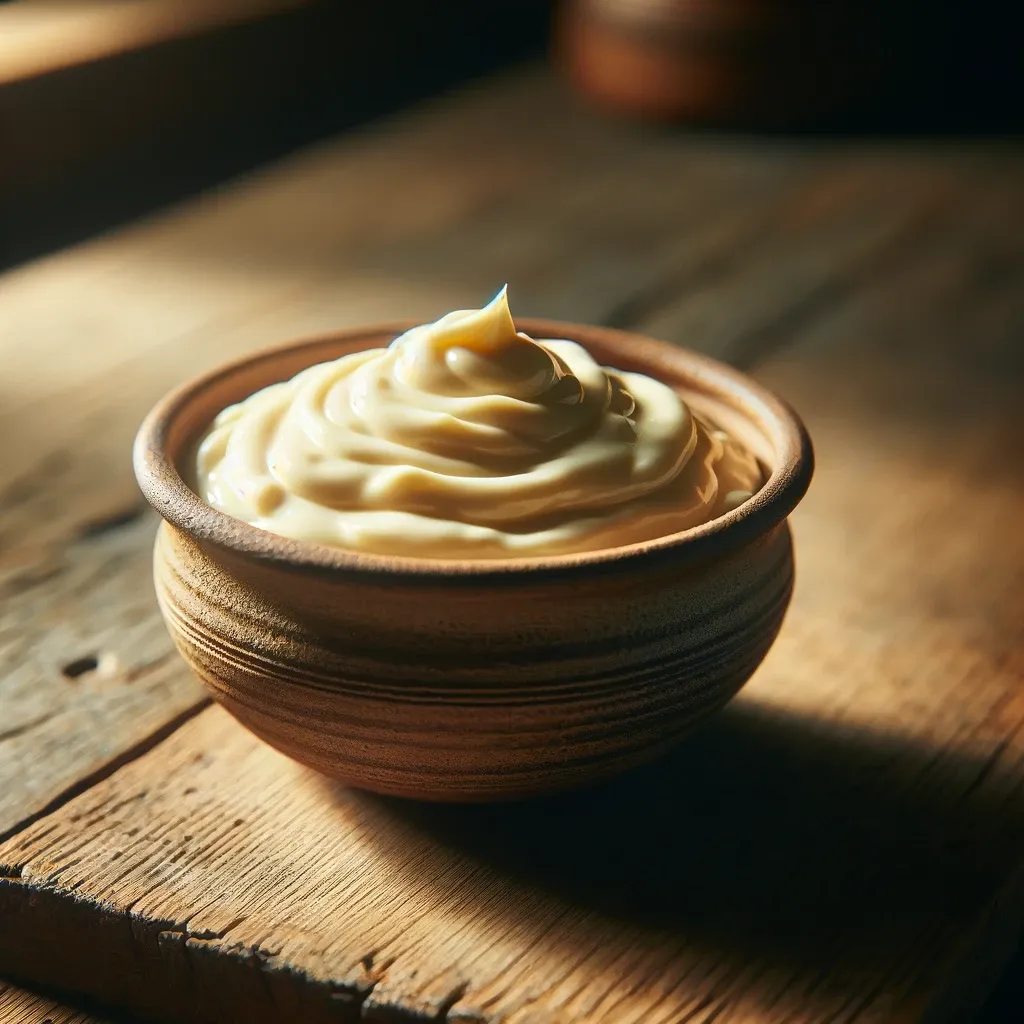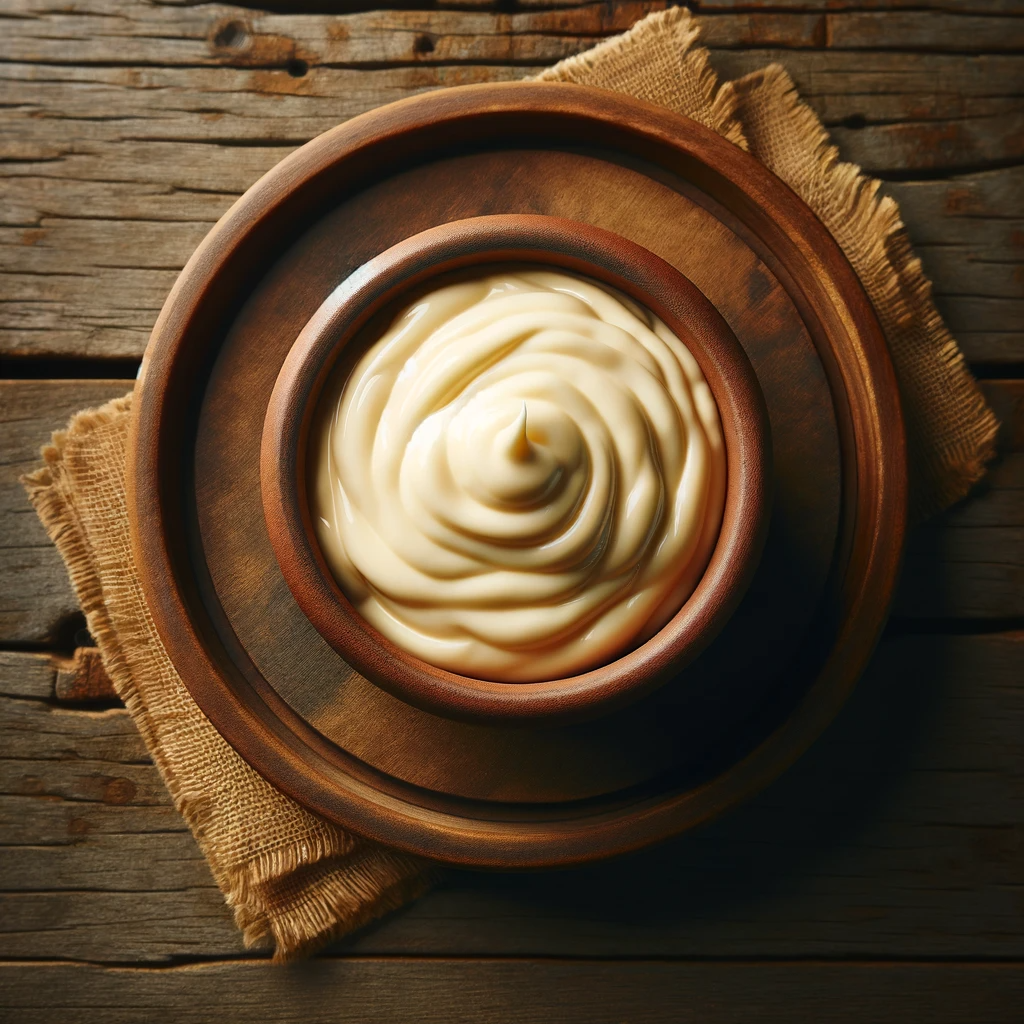Homemade Mayonnaise
Homemade mayonnaise doesn’t take too long to make, and it’s worth the effort since the taste and texture are far fresher and richer than store-bought mayonnaise. The result is beautifully creamy mayonnaise tailored to your taste.

Mayonnaise
Mayonnaise is an emulsion, meaning it’s a mixture of two liquids that usually wouldn’t mix. The oil and lemon juice or vinegar are emulsified in mayonnaise, with the egg yolk acting as the emulsifying agent.
Typically, we use a food processor to make mayonnaise because this just makes the process far easier. But, of course, where there’s a will, there’s a way, and you can make this recipe without a food processor by using a whisk. This method will take longer, and you’ll need to whisk rapidly and consistently so that your mayonnaise doesn’t split.
Eggs
Mayonnaise consists of raw egg yolks - this is where a lot of the richness of mayonnaise comes from. The eggs also work to bind all the ingredients in the mayonnaise together. The raw eggs in mayonnaise are perfectly fine to eat, but you can also purchase pasteurized eggs.
Oil
We suggest using neutral-flavored oil, such as vegetable oil or sunflower oil. Other oils, e.g., olive oil, could be slightly overpowering in mayonnaise. When the oil is added to the eggs (slowly), this thickens the mixture, producing creamy mayonnaise. We use a food processor to do thicken as the process takes a little bit of time to do by hand, but we think it’s still totally worth it for this mouth-watering mayo!
Lemon and seasoning
The lemon juice adds a lot of flavor to the mayonnaise through its acidity. It also helps stabilize the mixture so the mayonnaise won’t split. You can substitute the lemon for vinegar, such as white wine vinegar.
In this recipe, we add some salt and pepper for seasoning. We love some pepper in our mayonnaise, but this is entirely optional, and we recommend seasoning to taste. You can tailor your mayonnaise to suit your taste by adding herbs, different seasonings, and spices.
Make your mayo
One of the best things about mayonnaise is that it’s easy to customize, and we love homemade mayonnaise because the flavors and texture are so much richer and fresher than store-bought mayo. It makes any other ingredients added pop even more. Here are some of our top suggestions to make your mayonnaise your own;
- Garlic aioli: Start with your homemade mayonnaise base and blend in fresh minced garlic for a flavorful twist. If you’re feeling adventurous, try some of our other aioli recipes: chili aioli, pesto aioli, and bacon aioli.
- Herb mayonnaise: Combine your homemade mayonnaise with finely chopped fresh herbs such as dill, parsley, and chives.
- Spicy mayonnaise: Enhance your mayonnaise with a spicy kick by adding hot sauce or minced chili peppers.
- Lemon dill mayonnaise: Infuse your mayonnaise with fresh lemon zest and chopped dill for a tangy and herbaceous note.
- Chipotle mayonnaise: Mix chipotle peppers and some adobo sauce into mayonnaise for a smoky and spicy flavor.
- Truffle mayonnaise: Elevate your classic mayonnaise with a small amount of truffle oil or finely grated truffle.
- Saffron mayonnaise: Create an exotic variation by infusing your mayonnaise with a pinch of saffron threads soaked in warm water.
- Curry mayonnaise: Blend curry powder into mayonnaise for a flavorful twist that pairs well with chicken or vegetables.
- Wasabi mayonnaise: Combine prepared homemade mayonnaise with wasabi paste for a Japanese-inspired zesty kick.

What is mayonnaise made of?
Mayonnaise is made of egg yolks, mustard, oil, lemon juice (or vinegar) and seasoning. Mayonnaise is an emulsion, which means that it combines egg yolk, oil and an acid (lemon juice or vinegar) by adding the oil slowly to the mixture and thickening it.
How do I store homemade mayonnaise?
Store homemade mayonnaise in an airtight jar in the fridge for up to four days to one week.
How do I fix broken or split mayonnaise?
If oil is added too quickly to the eggs, there is a chance that the mayonnaise will split. This means that the ingredients will not combine properly. If this happens, try adding ½ teaspoon mustard or another egg yolk and continue to whisk until combined. Keep adding the oil to the mixture very slowly (drop by drop) until the mixture starts to thicken.
Homemade Mayonnaise
Homemade mayonnaise doesn’t take too long to make and it's definitely worth the effort since the taste and texture are far fresher and richer than store-bought mayonnaise. The result is beautifully creamy mayonnaise tailored to your taste.
Cuisine
French
Serves
30
Prep
10 mins
Cook
0 mins
Total
10 mins
Calories
143 kcal

Ingredients
4 egg yolks
2 tablespoons dijon mustard
500 ml neutral-flavored oil
4 teaspoons lemon juice or vinegar
½ teaspoon salt
½ teaspoon pepper
Instructions
Add the 4 egg yolks to the food processor along with the 2 tablespoons mustard and mix the ingredients for roughly 15 seconds.
Very slowly, add the oil drop by drop. Continue to mix all the ingredients in the food processor. Be careful to add the oil in gradually.
Once the mixture has started to thicken, add in the 4 teaspoons lemon juice. At this point, you can continue adding in the rest of the oil at a bit of a faster pace (rather than drop by drop) until you have a creamy and thick mayonnaise.
Add in the ½ teaspoon salt and ½ teaspoon pepper (optional) to the mixture and season to taste. You can also add more lemon juice or vinegar according to taste.
Notes
In this recipe, we use a food processor but you can also use a whisk and do this by hand. However, this will take longer and you need to make sure to whisk rapidly and consistently to avoid your mayonnaise splitting.
If the mayonnaise is too thin, slowly add in a bit more oil to thicken it.
Nutrition
- Calories 143 kcal |
- Carbohydrate Content 0.17 g |
- Cholesterol Content 21.7 mg |
- Fat Content 15.99 g |
- Fiber Content 0.02 g |
- Protein Content 0.4 g |
- Serving Size 1 portion |
- Sodium Content 42.22 mg |
- Sugar Content 0.04 g |
About the author
Emma Donin is the culinary maestro behind this blog that serves as a melting pot of global cuisines and gastronomic adventures. Her culinary journey began in her grandmother's kitchen, where she learned the fundamentals of cooking and the importance of using fresh, quality ingredients.
